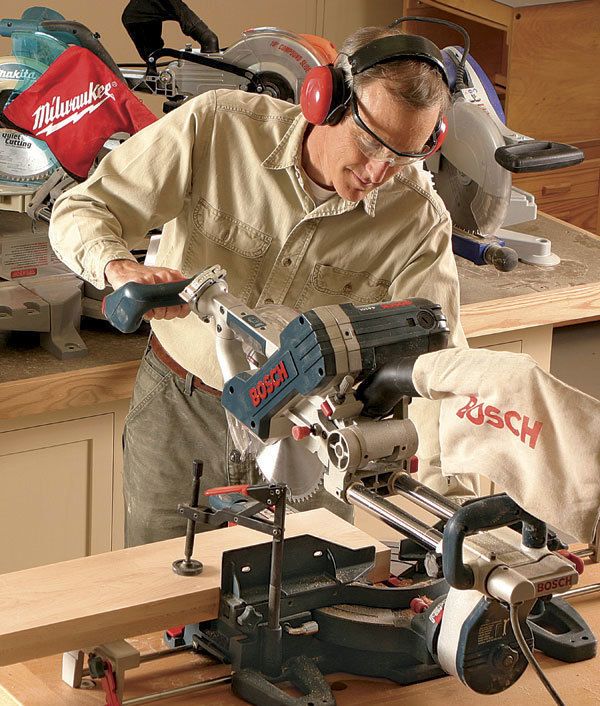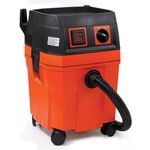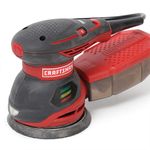10-in. Sliding Compound Miter Saws
They're versatile, accurate, and reasonably priced
Synopsis: The ability to miter, bevel, crosscut wide material, make compound cuts, and even plow dadoes makes the 10-in. sliding compound-miter saw a perfect fit for many shops. But some saws achieve the compromise between performance and price better than others. Andy Beasley reviews six 10-in. sliders currently on the market, focusing on smoothness, accuracy, power, and ease of use.
If you’re like me and didn’t make a fortune by starting up a computer software company, you probably juggle cost and performance tradeoffs when making a purchase for the shop. A well-made tool that’s capable of multiple tasks is always near the top of my shopping list. That’s why I like the miter saw so much. But if you are shopping for a miter saw, the choices can be bewildering, with four major types available. There are fixed compound-miter saws (CMS) as well as sliding compound-miter saws (SCMS), and both come in 10-in. and 12-in. blade sizes.
To help select which type you need, consider two common scenarios: mitering tall moldings and crosscutting wide stock. Compared to any SCMS, both the 10-in. and the 12-in. CMS can cut taller material standing vertically against the fence, but the 10-in. sliding saw beats both CMS sizes when you lay the molding flat on the table. Need to crosscut a 12-in. plank? Forget about a standard CMS; even the 12-in. version can crosscut only about 8 in. Finally, while a 12-in. sliding saw can crosscut wider stock than a 10-in. model, you’ll pay about another hundred bucks for the measly half-inch of additional capacity.
The ability to miter, bevel, crosscut wide material, make compound cuts, and even plow dadoes, all at a reasonable price, makes the 10-in. slider a perfect fit for many shops. However, some saws achieve this compromise between cost and capability better than others.
A good saw is the sum of its parts
A sliding compound-miter saw must perform three basic operations: The head must pivot to create miter cuts; it must tilt to perform bevel cuts (the compound action makes use of both features); and the cutterhead must slide in and out on tubular steel guide rails to give the machine its impressive crosscut capability.
I tested the six 10-in. sliding compound-miter saws on the market. All offer similar cutting capacities, but two were available as left-hand, single-bevel models only. To cut a right-hand bevel you must swing the workpiece around, perhaps awkward in a cramped shop.
Brands tested are the Bosch 4410L, Chicago Electric 90891, Hitachi C10FSH, Makita LS1013L, Metabo KGS 303, and Milwaukee 6497-6.
From Fine Woodworking #186
For the full article, download the PDF below:
Fine Woodworking Recommended Products

Fein Turbo II HEPA Wet/Dry Dust Extractor

Craftsman Random Orbit Sander

Stanley Powerlock 16-ft. tape measure






















Comments
Excellent Article. I would like to see one additional category for your comparison chart: country of manufacture. Is the Bosch made in Europe? Are the Makita and Hitachi still made in Japan? Is Milwaukee made in the America? It is relevant to me and is considered anytime I make purchases.
Log in or create an account to post a comment.
Sign up Log in